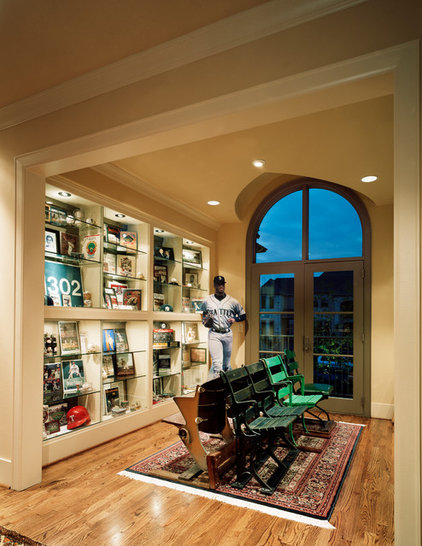5 Remodels That Make Good Resale Value Sense — and 5 That Don’t
But if your budget is a concern, and the wise investment of limited home improvement dollars matters, then there are a few basic guidelines you should familiarize yourself with before planning your remodel. Today we review five remodels that typically make good financial sense, providing a nice return on the investment at the time of resale — and five that don’t.
1. Kitchens. Updating a tired old kitchen is one of the wisest methods, and a tried and true one, of increasing the value of your home. When planning a kitchen remodel, and making design decisions and selections for plumbing fixtures, appliances, cabinets and countertop materials, you should determine whether you are prioritizing your own design aesthetic or the return on your investment.
Either priority is perfectly acceptable, but you should understand which is your priority, or strike a balance between the two that you can feel good about.
For example, using the existing kitchen layout and affordable cosmetic materials is a sure way to keep the cost of your kitchen remodel manageable. When you start tearing out walls, bumping out the exterior home footprint to gain a few feet, and moving plumbing fixtures and appliances, the cost of the remodel will jump and your dollars will be less efficiently spent.
See more ways to save on your kitchen remodel
Newly added square footage equals increases your home’s value. There are certain costs that will be associated with your addition regardless of the size. New square footage will require the demolition of existing exterior walls, a new foundation, a new roof, new exterior siding and probably new windows. If you are going to incur these expenses, it’s important to get some bang for your buck. It’s important that the added room is sized so that the space can be efficiently produced.
The good news is that there are a number of very affordable projects that can improve curb appeal, and some more extensive improvements that can likely pay off as well. Simply cleaning out overgrown brush and making a few new planting additions to your landscape can go a long way toward improving curb appeal at a very low cost.
Repainting is another low-cost, high-impact improvement. Costlier changes such as changing out old windows or an aged entry door are things that potential buyers will notice and value. Even more extensive front-elevation remodels, such as added dormers and front porches, can prove wise from an investment standpoint.
See ways to boost curb appeal
See 10 things to consider for the bedroom addition of your dreams
The same rules apply to a bathroom remodel as to the kitchen. Cosmetic changes are safer from an investment standpoint than modifications involving changed layouts or minor additions, which can result in inefficient expenses.
See design tips to know before remodeling your bathroom
1. Kids’ spaces. No, this is not straight from the Grinch himself. Yes, if your kids have a climbing wall, the fantastic addition will probably lead to hours of fun, increased strength and perhaps even a sense of accomplishment for your kids. It’s a fine idea, and like a pool slide, might even be a childhood dream come true.
But there is no assurance your home buyer will feel the same way. That rock climbing wall, which my own kids would flock to, might actually represent a negative value to a buyer who sees this space as his man cave. (The Grinch would assuredly remove the structure and replace it with a 70-inch flat-screen stolen from the home of Cindy Lou Who).
Backyard pools are loved by millions, and while this appreciation is well founded, they should be constructed for their many virtues that are not investment related. A pool might increase the value of your home but is unlikely to pay for itself, as some buyers will perceive the pool as a negative maintenance expense.
See how to replaster or remodel a swimming pool
But the design wouldn’t appeal to someone who does not love wine. Original designs rarely appeal to everyone, so when adding spaces to a home you know you will sell, consider how personal it is and if others will feel as strongly as you do.
See wine storage ideas
The reason is simple. If you bump out a bedroom wall by a few feet, you might make that bedroom much more comfortable. That benefit alone might make it worthwhile in your circumstance. But the cost of all the added elements, including foundation, roof, framing and drywall, will result in only a small gain in square footage.
Say your 2,400-square-foot, three-bedroom home becomes a three-bedroom home with 2,440 square feet. It’ll be unlikely that you’ll recover the cost of the addition.
… or a little space for your cherished memorabilia collection, the decision is yours to make. Just be sure you make the decision in an informed manner, with a full understanding of the investment value for each dollar spent.
Author:













